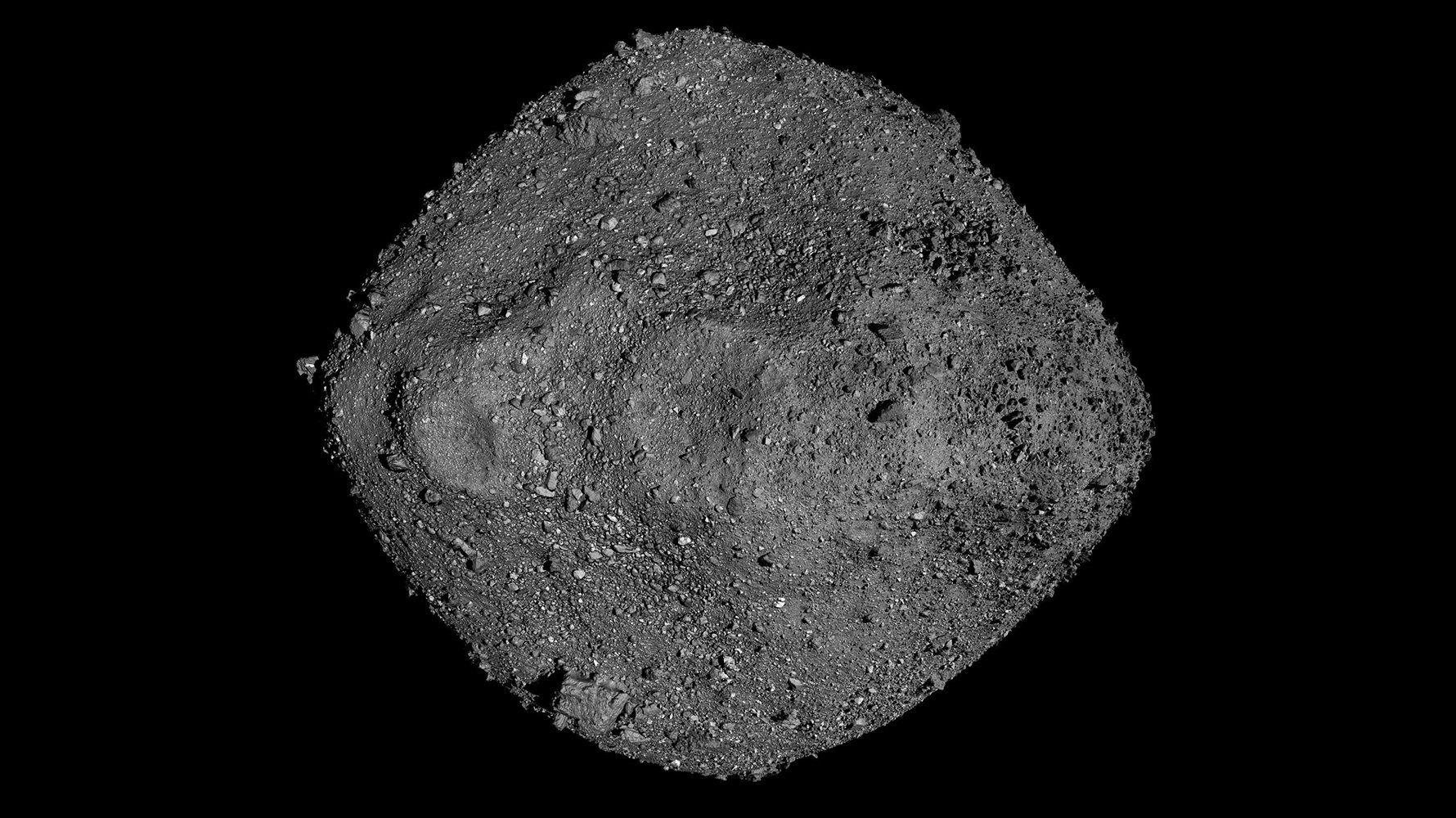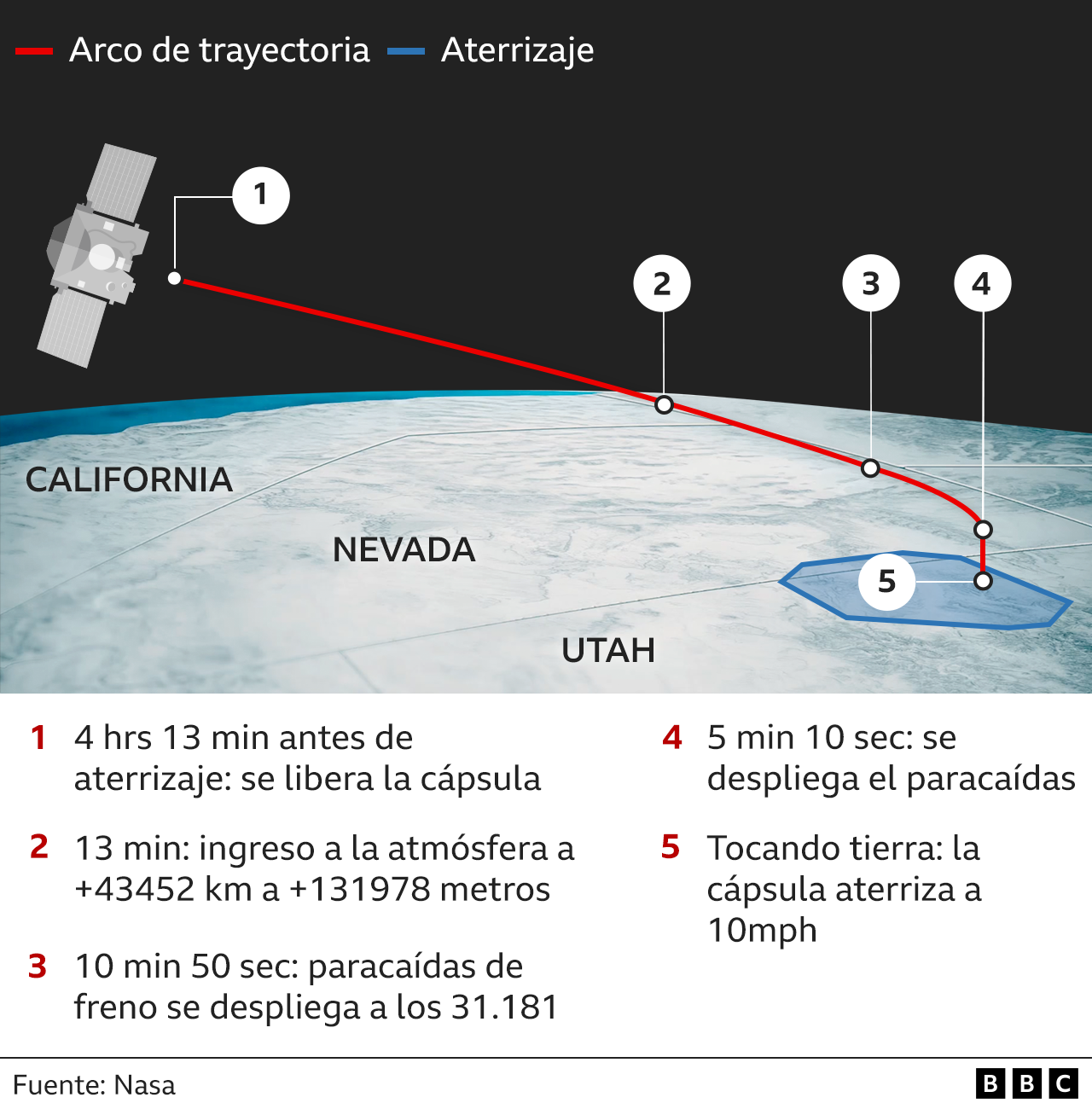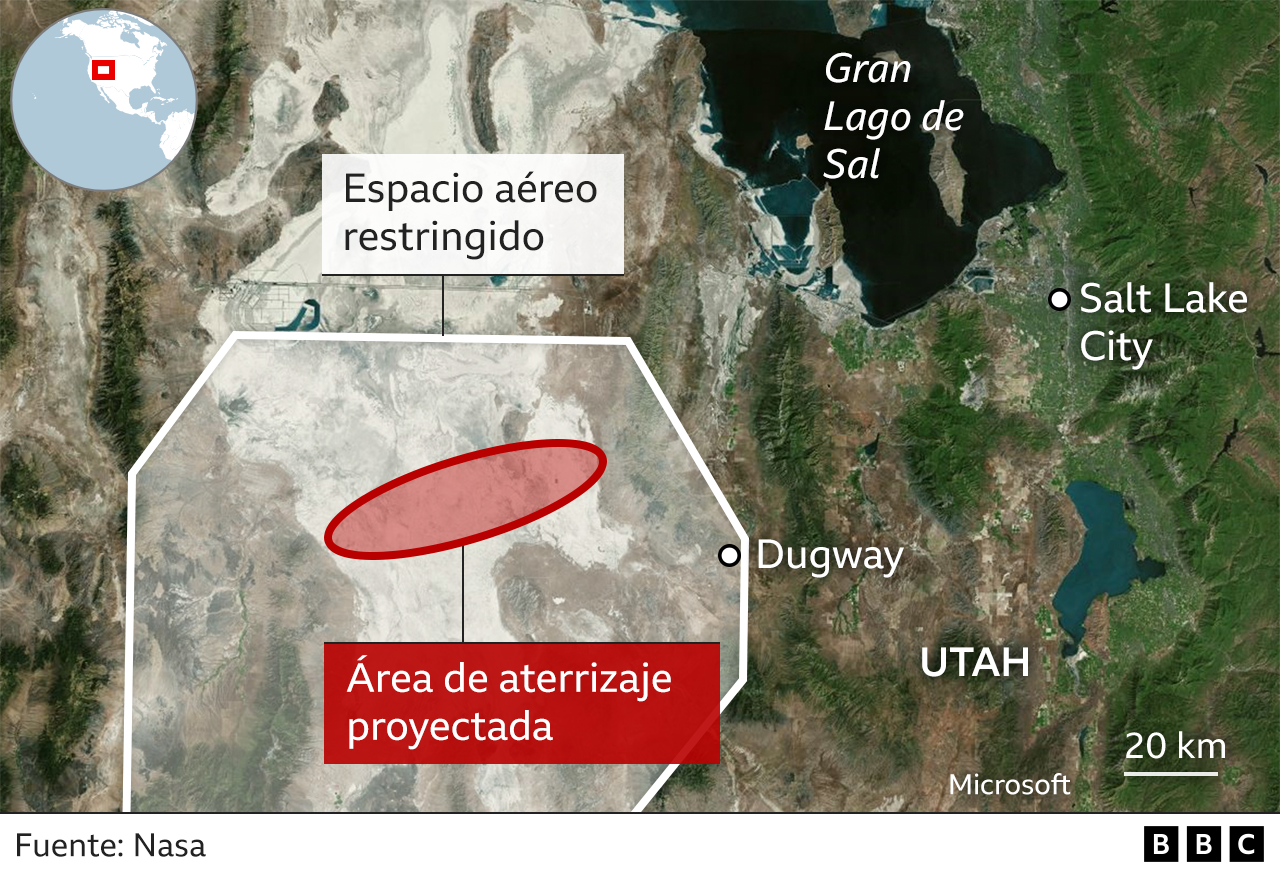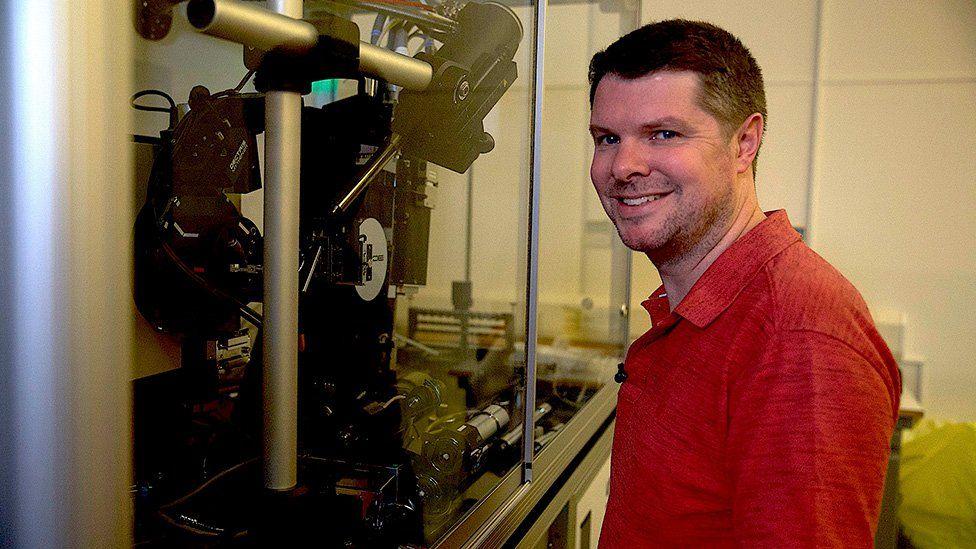At that speed he became a fireball in the sky, but a heat shield and parachute slowed his descent, making for a soft landing in the Utah desert in the US.
The capsule brings precious cargo: a handful of dust collected from asteroid Bennu, a mountain-sized space rock that could give us key information to answer one of humanity’s deepest questions: where did we come from?
“When we have 250 g of asteroid Bennu, We will see material that predates the existence of our planet; some grains may even be older than our solar system.says Professor Dante Lauretta, the mission’s principal investigator.
“We’re trying to trace our beginnings. How was the Earth formed and why is it a habitable place? Where does all the water in our oceans come from? Where does all the air in our atmosphere come from? And more importantly, what is the source of all the organic molecules that make up life on Earth?”
The prevailing view is that many of the key components of life arrived on our planet early in Earth’s history in the form of showers of meteorites, many of which may have resembled Bennu.



The journey to retrieve Bennu’s fragments began in 2016, when NASA launched the Osiris-Rex spacecraft toward the 500-meter-diameter object.
It took two years to reach the rocky body, and another two years spent mapping it before the mission team could confidently identify a location on the surface of the space rock from which a “soil” sample could be taken.
The role of Brian May



British rock legend and astrophysicist Brian May played a key role in making this decision. The Queen guitarist is an expert at creating stereo images.
It has the ability to align two images of the same object from different angles to create a sense of perspective, forming a 3D scene. He and his colleague Claudia Manzoni did this to create a final list of sites on Bennu for sample collection. They identified the safest places to approach.
The timing of the sample, October 20, 2020, was incredible.



Osiris-Rex descended onto the asteroid, holding his grapple on the end of a ten-foot pole.
The idea was to hit the surface of the rock and at the same time release a stream of nitrogen gas to agitate the dust. But what happened next was a shock.
When the mechanism made contact, the surface split like liquid. By the time the gas came out, the disk was already 10 cm lower. Nitrogen pressure opened a hole with a diameter of 8 meters. The material scattered everywhere, but the main thing is that some of it ended up in the collection chamber.



So here we are. Osiris-Rex delivered the sample to Bennu at the end of a seven-year, 7 billion-kilometer round trip.
The camera will be taken to the Johnson Space Center in Texas, where A special room was built for sample analysis.
Dr Ashley King from the Natural History Museum (NHM) in London will be one of the first to tackle this material. He is part of the “rapid analysis” team that will conduct the initial analysis.
“Returning samples from an asteroid is not something we do very often. So you want to take the initial measurements and do them really well,” he says. “It’s quite exciting.”



NASA considers Bennu the most dangerous rock in the solar system. Its trajectory through space makes it the asteroid with the highest known probability of impacting Earth.. But don’t be alarmed, the probability is very low, it’s like throwing a coin in the air and getting heads eleven times in a row. And the impact won’t happen for another century.
Bennu probably has water, and quite a bit: at least 10% of its weight, and all of it is in minerals.. Scientists will try to find out whether the proportions of different types of hydrogen atoms in this water are similar to those in Earth’s oceans.
If, as some experts believe, the early Earth was so hot that it lost most of its water, finding an H2O coincidence on Bennu could support the idea that later asteroid bombardment played a role in increasing the volume of our oceans.



It is also possible that Bennu contains between 5% and 10% of its weight in carbon.. This is where most of the interest lies. As we know, our planet is based on organic chemistry. Could molecules, like water, have come from outer space to give birth to biology on the young Earth?
“One of the first analyzes that will be carried out on the samples will include an inventory of all the carbon-based molecules they contain,” says Professor Sarah Russell.
“By studying meteorites, we know that asteroids likely contain different organic molecules. But meteorites are often quite contaminated, so these samples give us the opportunity to really learn what Bennu’s pristine organic components are like.”
Professor Lauretta adds: “We have never actually looked for protein amino acids in meteorites because of this contamination problem. “So we think we’ll really advance our understanding of what we call the ‘exogenous delivery hypothesis,’ the idea that these asteroids were the source of the fundamental building blocks of life.”
Additional reporting by Rebecca Morell, Alison Francis and Kevin Church
Remember you can receive notifications from BBC News Mundo. Download the latest version of our app and activate it so you don’t miss out on our best content.
Do you already know our YouTube channel? Subscribe!
See original article on BBC.
Source: La Opinion
Alfred Hart is an accomplished journalist known for his expert analysis and commentary on global affairs. He currently works as a writer at 24 news breaker, where he provides readers with in-depth coverage of the most pressing issues affecting the world today. With a keen insight and a deep understanding of international politics and economics, Alfred’s writing is a must-read for anyone seeking a deeper understanding of the world we live in.
